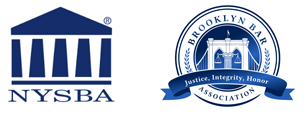Under common law, an attorney was originally only entitled to a lien upon the judgment but the scope of the charging lien was extended by statute [Judiciary Law §475] to give the attorney a lien upon the client’s cause of action as well. The lien comes into existence, without notice or filing, upon commencement of the action or proceeding. See, Matter of Heinsheimer, 241 NY 361 [1915]. In Matter of Heinsheimer, Judge Cardozo stated,
If the attorney got possession of the fund, he had a general lien. If he did not get possession, his lien was for the services that brought the fund into existence. This charging lien still exists under our statutes. It has been enlarged to the extent that it now attaches to a cause of action even before judgment. ‘From the commencement of an action or special proceeding‘ the attorney now has a lien ‘upon his client’s cause of action, claim or counterclaim, which attaches to a verdict, report, decision, judgment or final order in his client’s favor, and the proceeds thereof in whosoever hands they may come.‘ (Judiciary Law, Cons. Laws, ch. 30, sec. 475.) Except as thus changed, the charging lien is today what it was at common law.
The concept of protecting an attorney’s lien in litigation from inception through and after entry of judgment is an old one. As stated in the decision of Fischer-Hansen v. The Brooklyn Heights Railroad Company, 173 NY 492 [1903].
There is much learning in the books relating to the lien of an attorney upon a judgment for his costs as it existed before the statute, and though now virtually obsolete, it shows the fixed determination of the courts to protect attorneys against fraudulent settlements. The lien upon a judgment was not created by statute, but was ‘a device invented by the courts for the protection of attorneys against the knavery of their clients by disabling their clients from receiving the fruits of recoveries without paying for the valuable services by which the recoveries were obtained.’ Goodrich v. McDonald, 112 NY 157 [1889].
In Peri v. The New York Central and Hudson River Railroad Company, 152 NY 521 [1897], the Court of Appeals held that an attorney’s charging lien is a statutory lien “of which all the world must take notice, and any one settling with a plaintiff without the knowledge of his attorney, does so at his own risk.” In this case, that risk is borne by all of the defendants.
New York Judiciary Law Section 475 provides:
From the commencement of an action, special or other proceeding in any court or before any state, municipal or federal department, except a department of labor, or the service of an answer containing a counterclaim, or the initiation of any means of alternative dispute resolution including, but not limited to, mediation or arbitration, or the provision of services in a settlement negotiation at any stage of the dispute, the attorney who appears for a party has a lien upon his client’s cause of action, claim or counterclaim, which attaches to a verdict, report, determination, decision, award, settlement, judgment or final order in his client’s favor, and the proceeds thereof in whatever hands they may come; and the lien cannot be affected by any settlement between the parties before or after judgment, final order or determination. The court upon the petition of the client or attorney may determine and enforce the lien.
The Court of Appeals noted, in Matter of City of New York (United States of America-Coblentz), 5 NY2d 300 [1959], that the statute gives an attorney a lien on the cause of action which attaches to the judgment from the commencement of the action. In the decision, the Court stated that Section 475, in substance, declares the common law. The origin of an attorney’s lien, whether as retaining or as charging, is obscure, but in all events, irrespective of type, has been recognized and enforced by the courts from very early times (see Fourth Annual Report of N. Y. Judicial Council, 1938, p. 49; 7 C. J. S., Attorney and Client, § 210 et seq.; 5 Am. Jur., Attorneys at Law, § 208 et seq.). The underlying purpose at both common law and now, by statute, is to protect an attorney against the ‘knavery of his client’ (Matter of Rosentover v. Weiss, 247 AD 137 affirmed 272 N.Y 557; Goodrich v. McDonald, 112 NY 157) and, being created by statute, does not require the giving of any notice in order to bring it into existence (Matter of Drake v. Pierce Butler Radiator Corp., 202 Misc. 935) for it is generally regarded as an equitable assignment to the attorney of the fund procured by his efforts to the extent of the amount of his lien (Matter of Herlihy, 274 AD 342).
Other parties do not have the ability to destroy the attorney’s vested property rights in and to the Judgment. See, LMWT Realty Corp. v. Davis Agency, Inc., 85 NY2d 462 [1995] (“Manifestly, then, an attorney’s charging lien is something more than a mere claim against either property or proceeds; an attorney’s charging lien “is a vested property right created by law and not a priority of payment”).
In enforcing the charging lien, the attorney is not required to solely chase after his client for the money he is owed; he can also pursue the other defendants. In Haser v. Haser, 271 AD2d 253 [1 Dept. 2000], the court held that, under New York law, a plaintiff’s attorney may enforce her statutory charging lien against the defendant’s own assets, if he still possesses the settlement proceeds or knowingly paid them to the plaintiff so as to deprive the attorney of her compensation (citing to Kaplan v Reuss, 113 AD2d 184, 186-187, affd 68 NY2d 693; Fischer-Hansen v Brooklyn Hgts. R. R. Co., 173 NY 492, 502). The lien which attaches in the attorney’s favor cannot be impaired by a collusive settlement.






